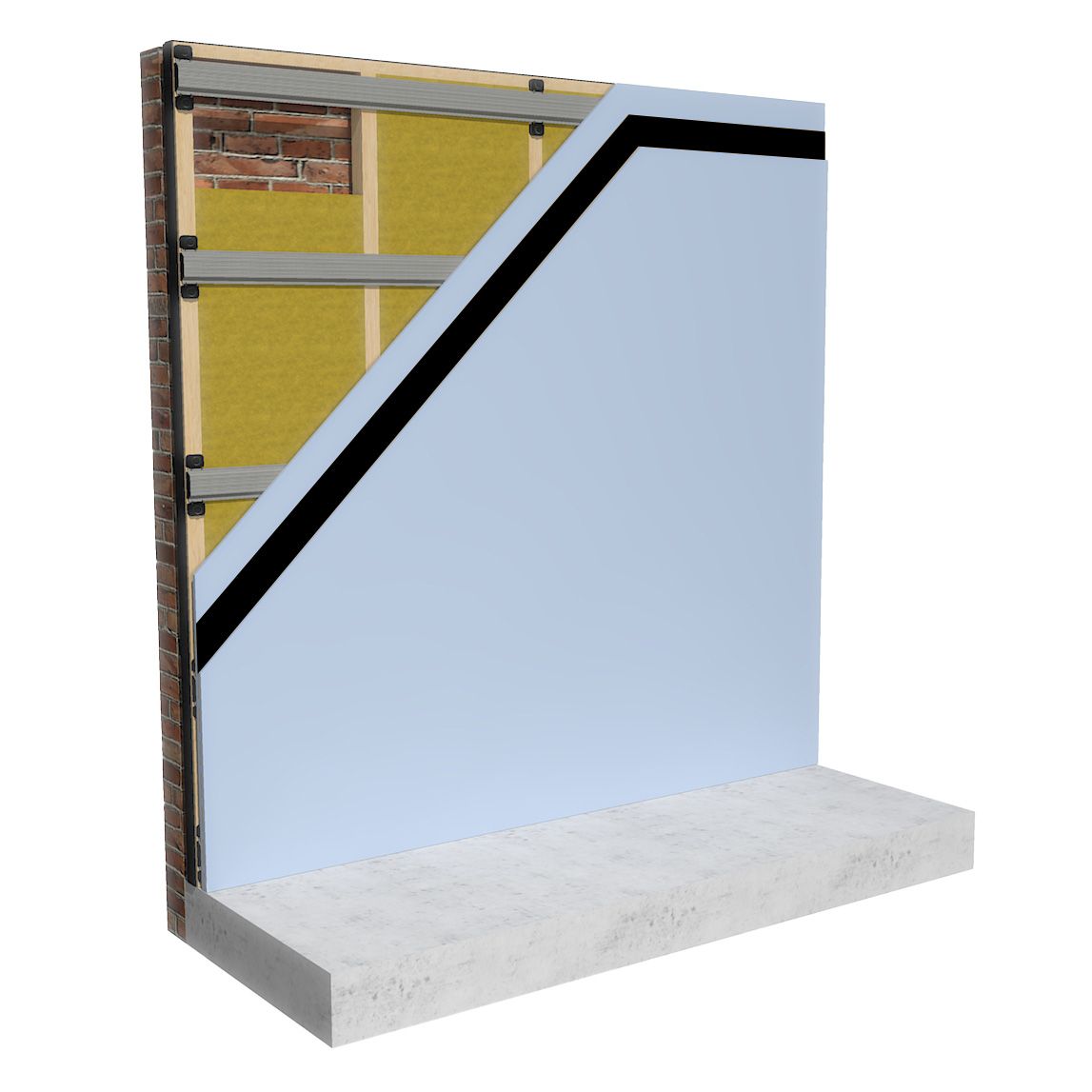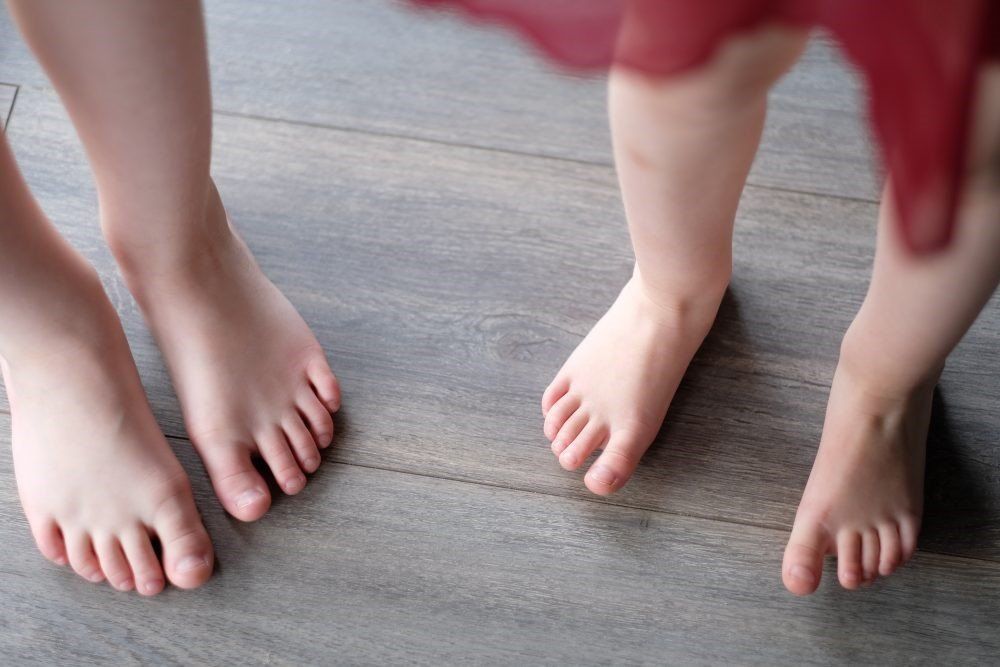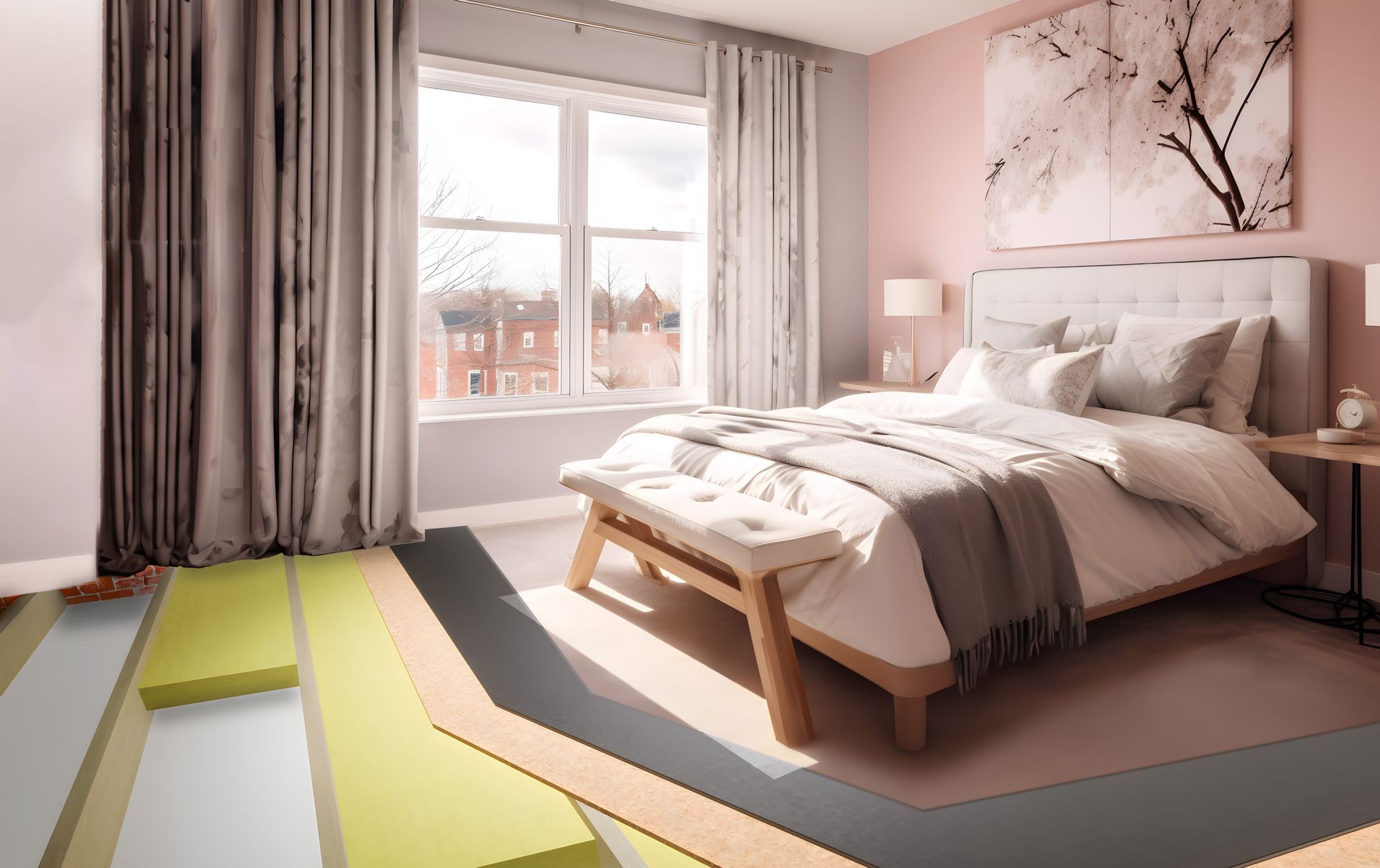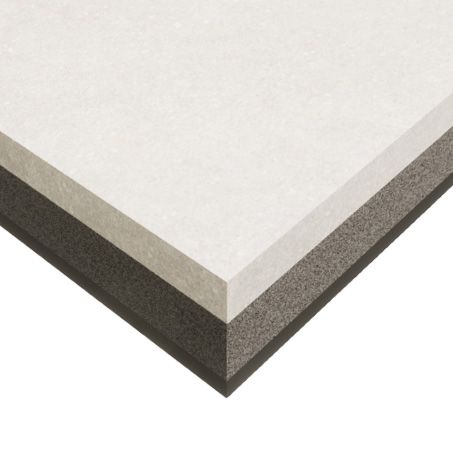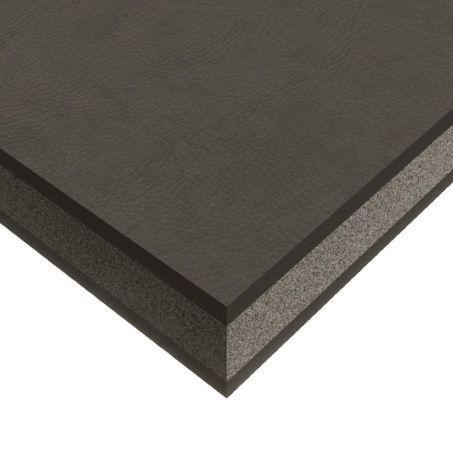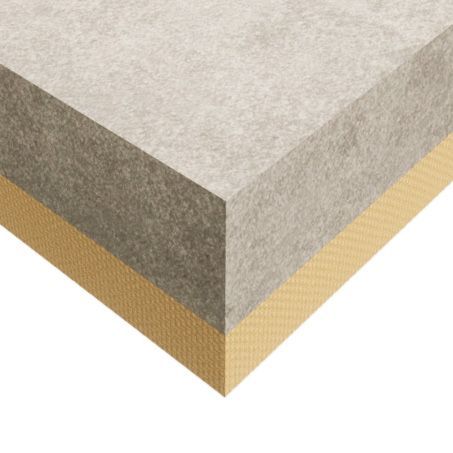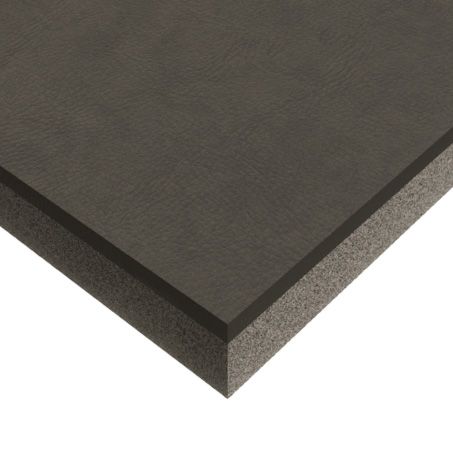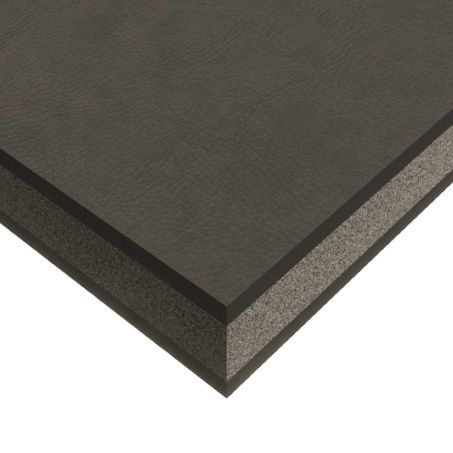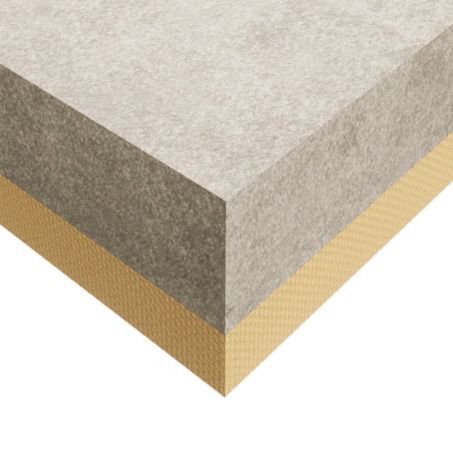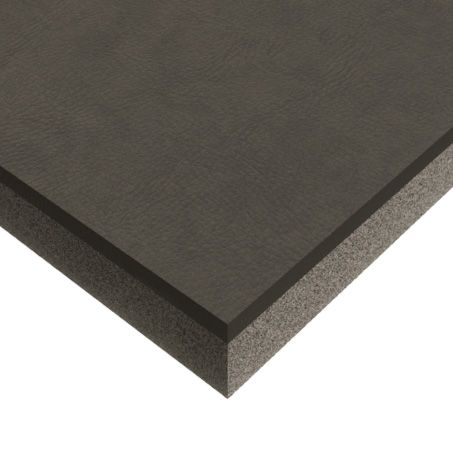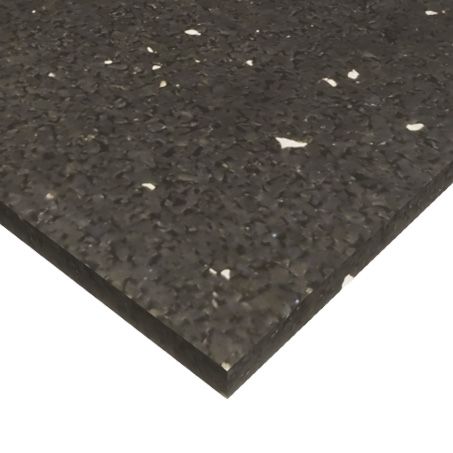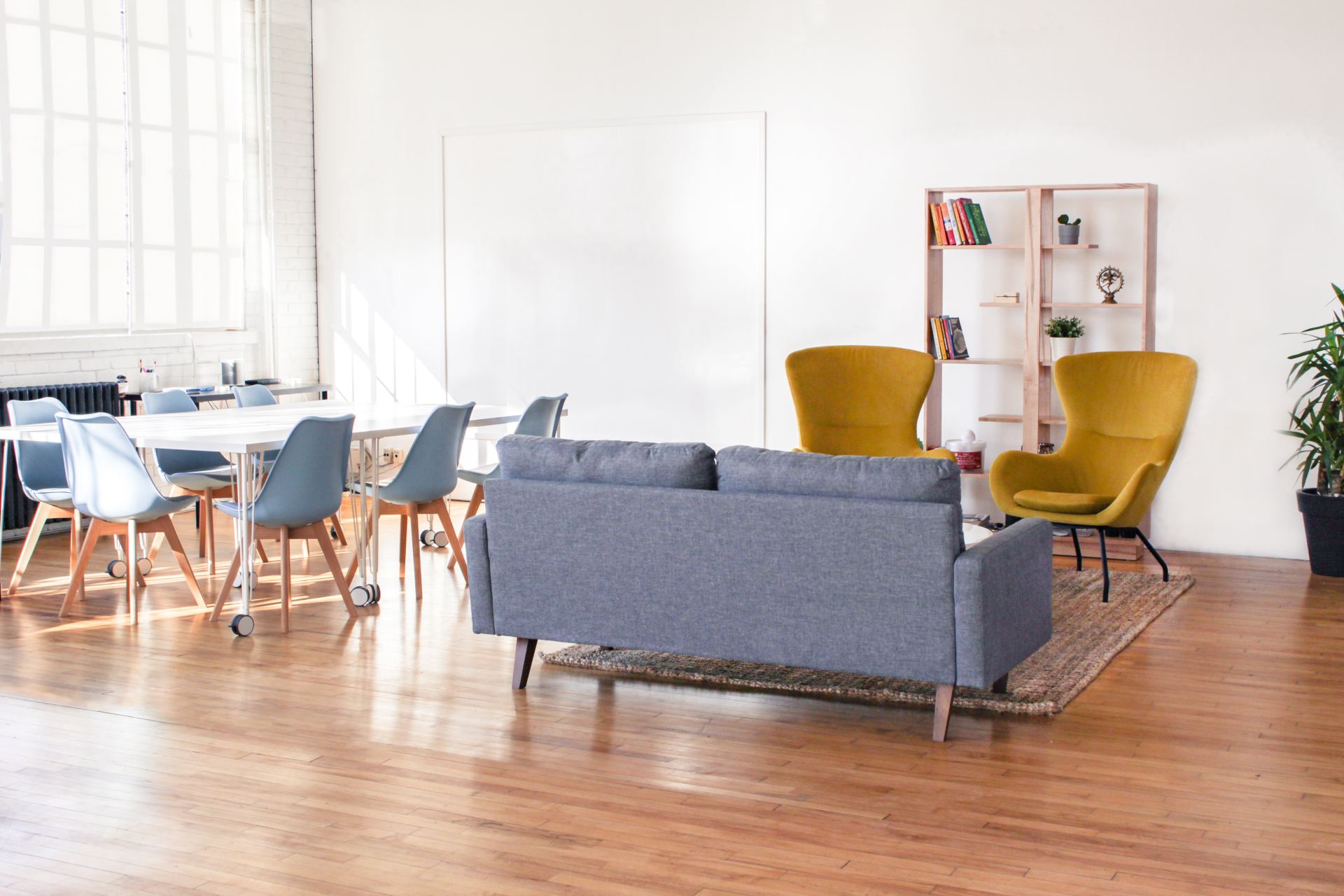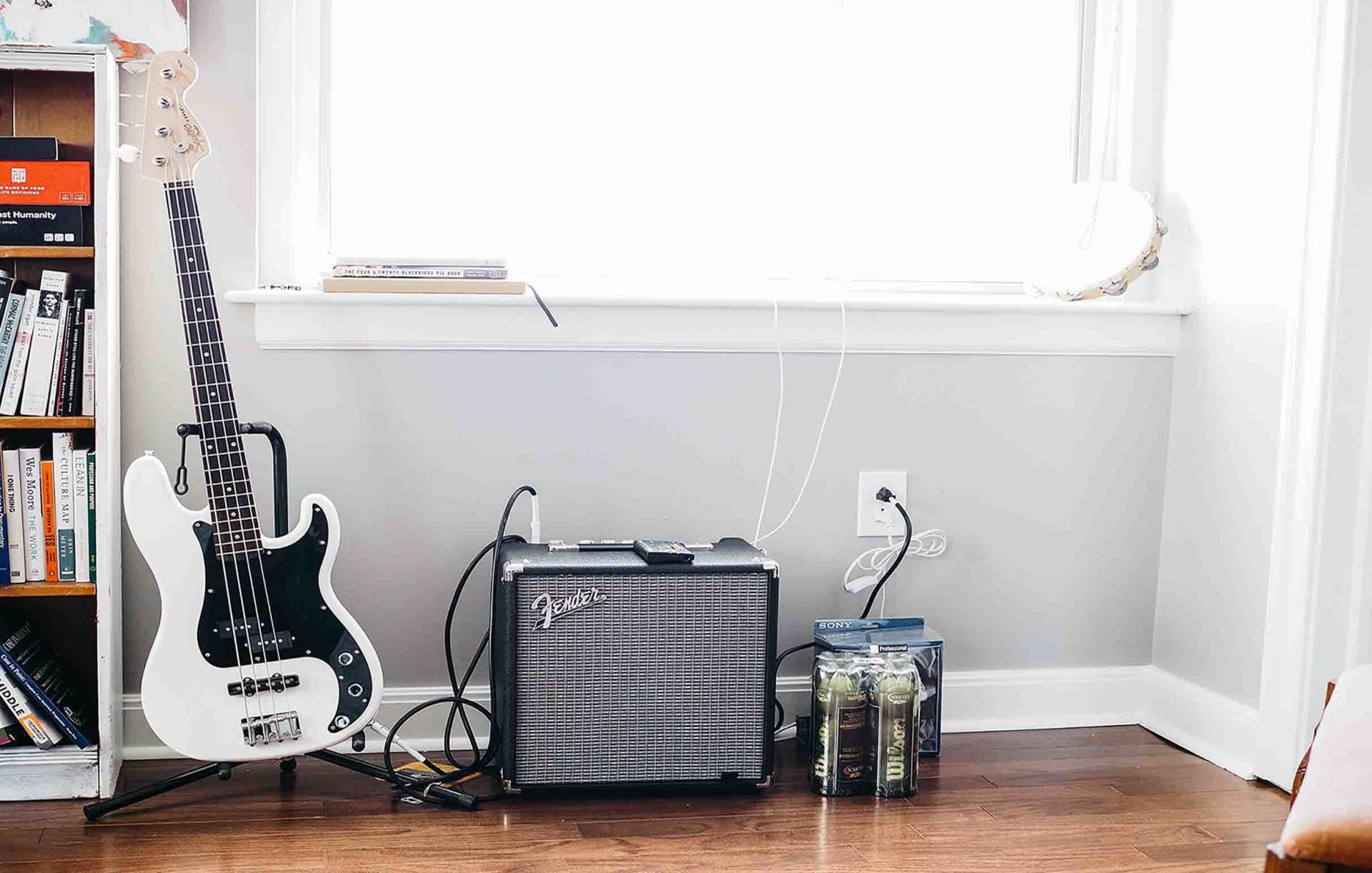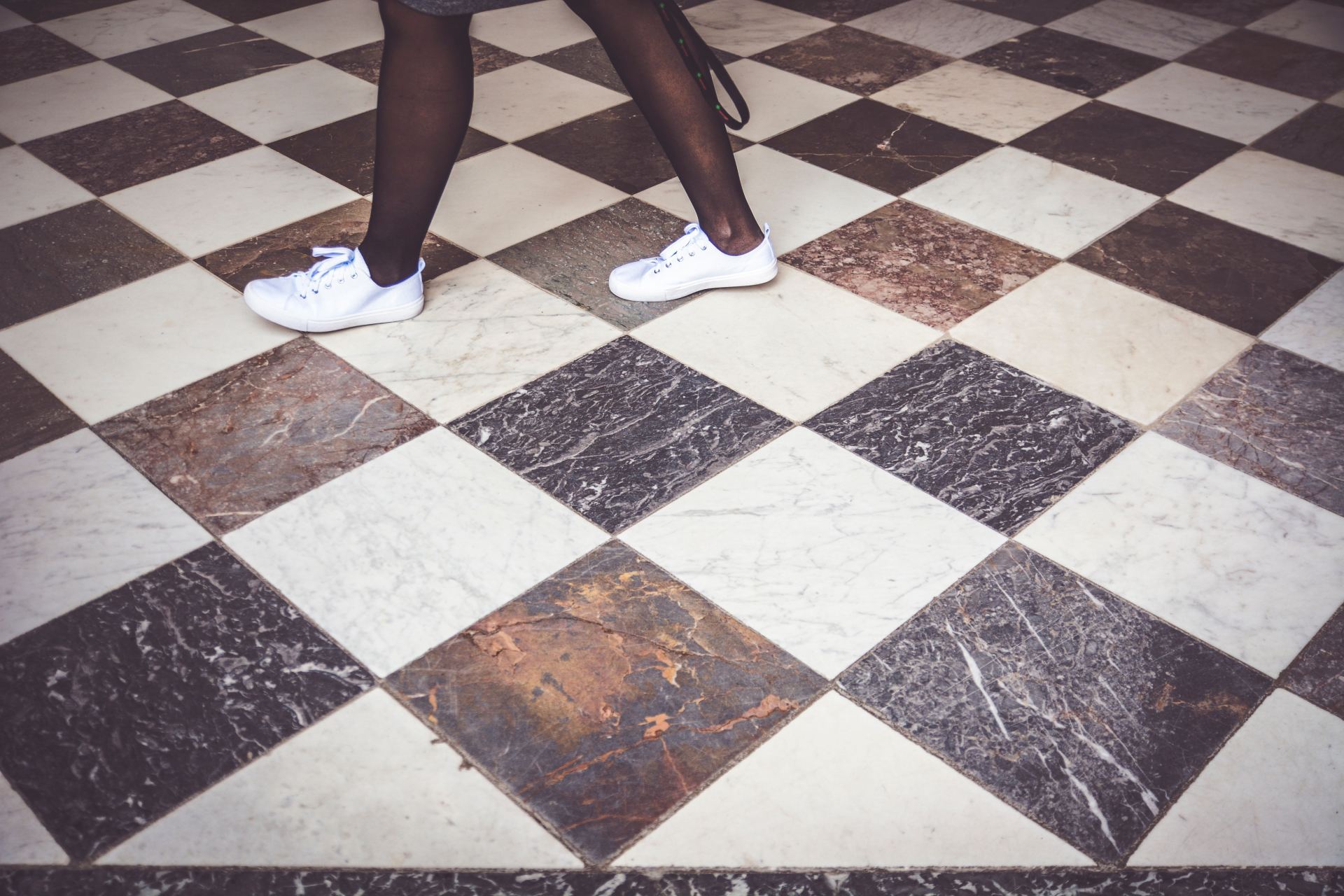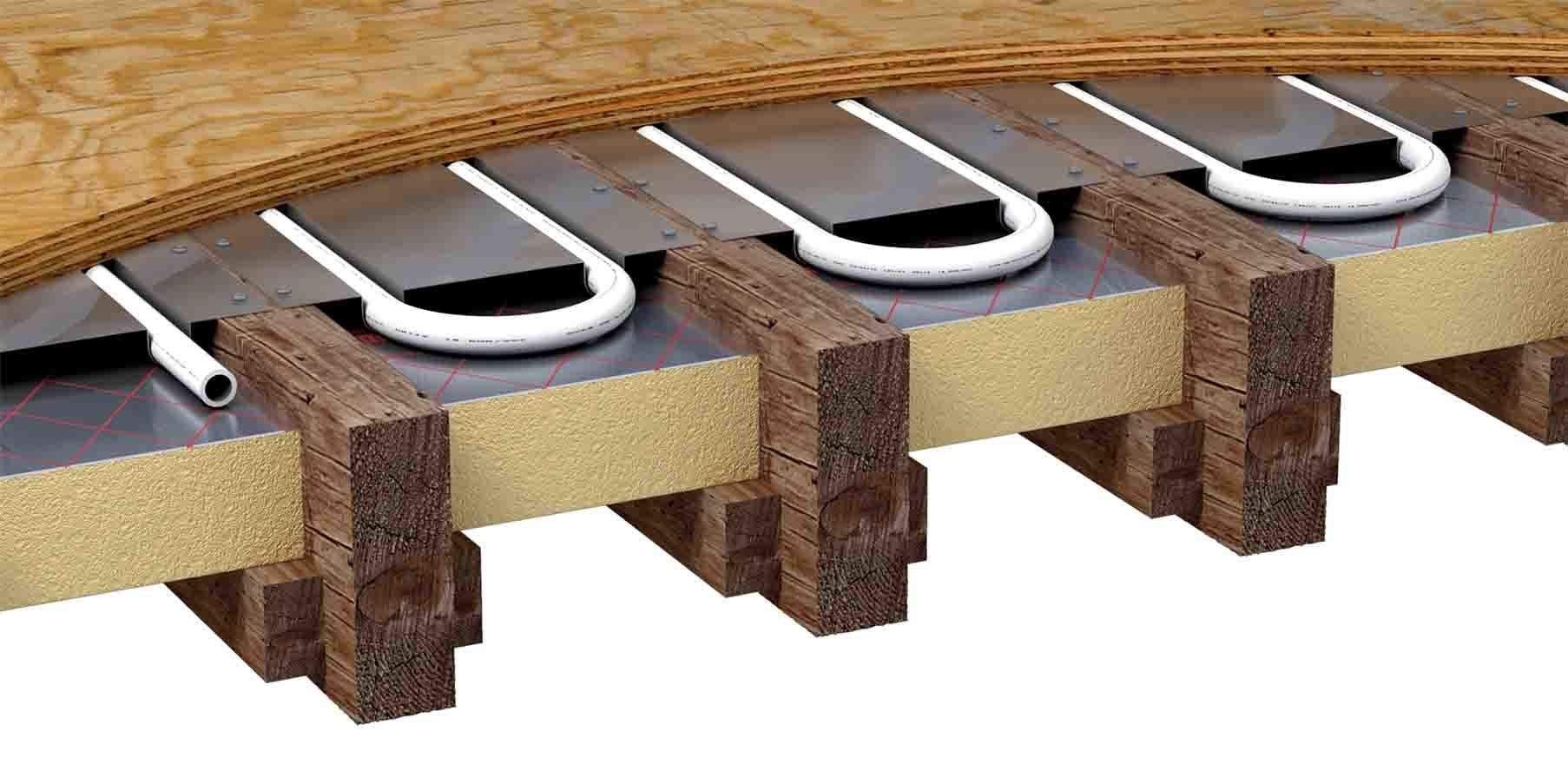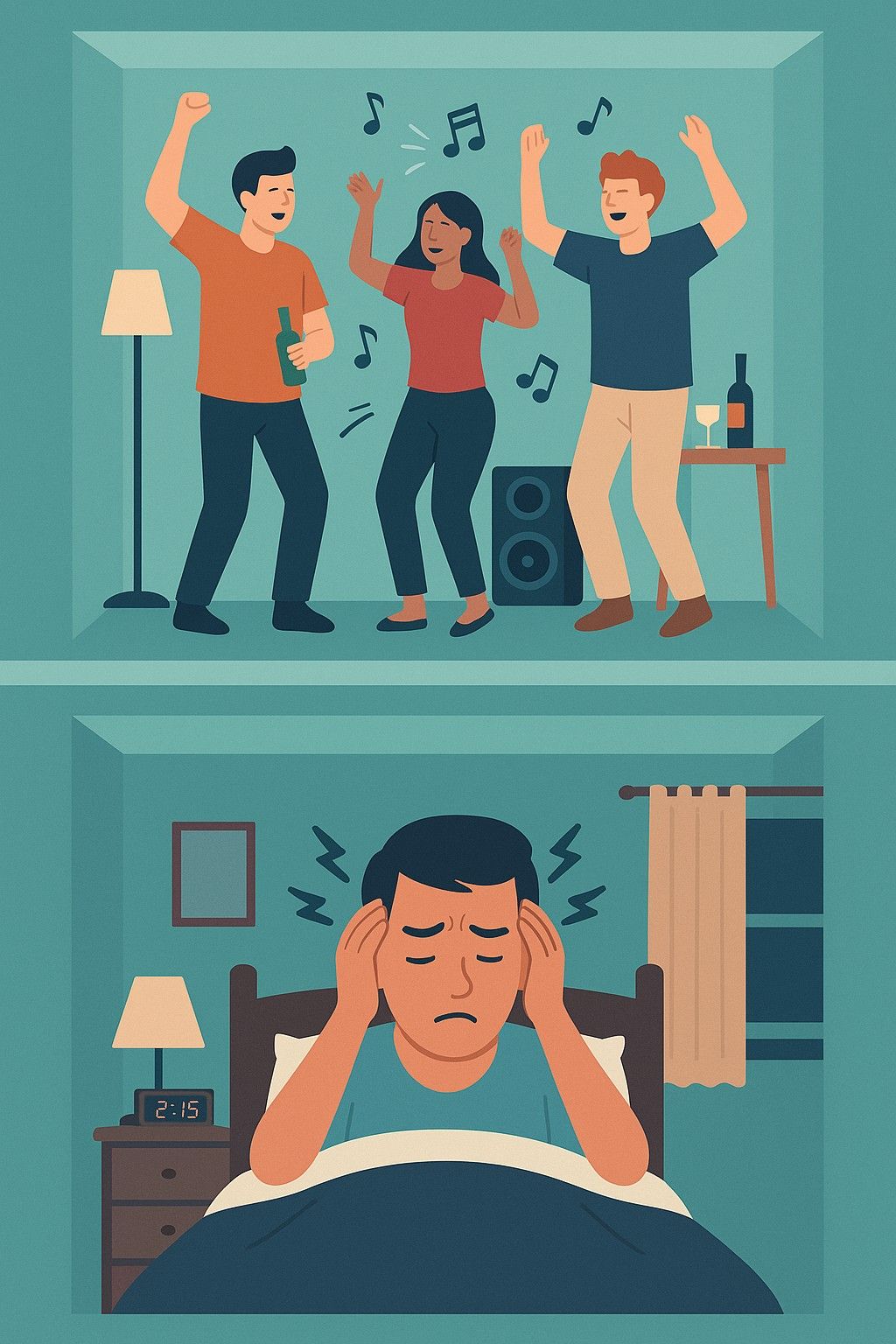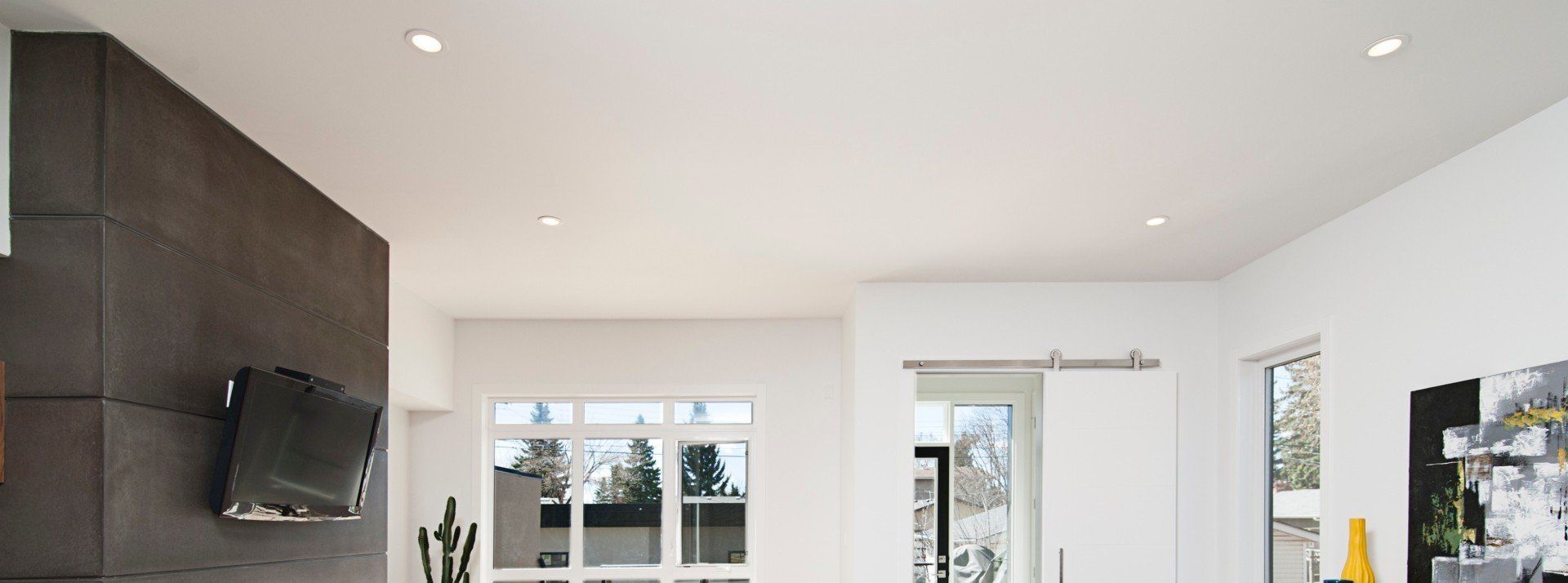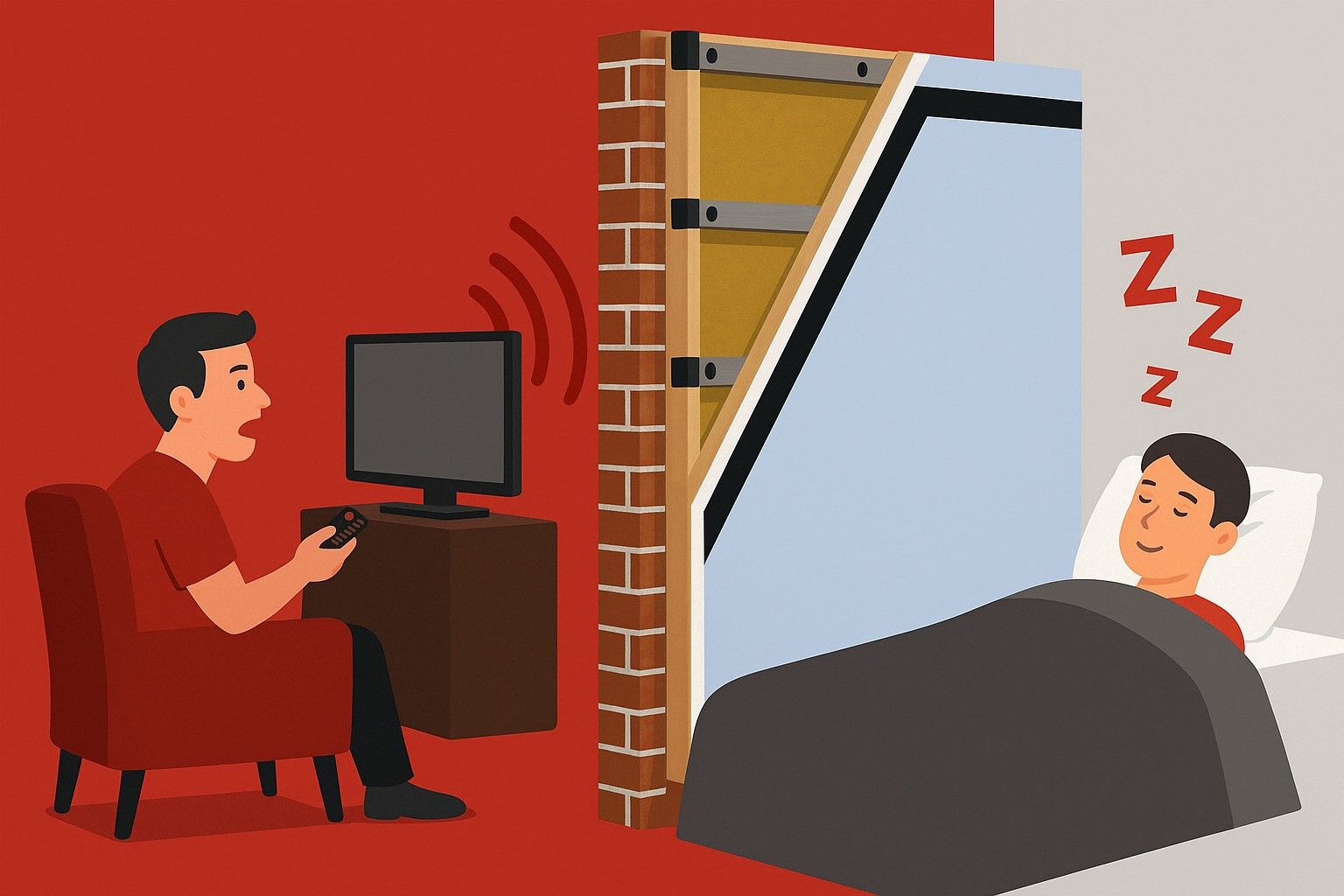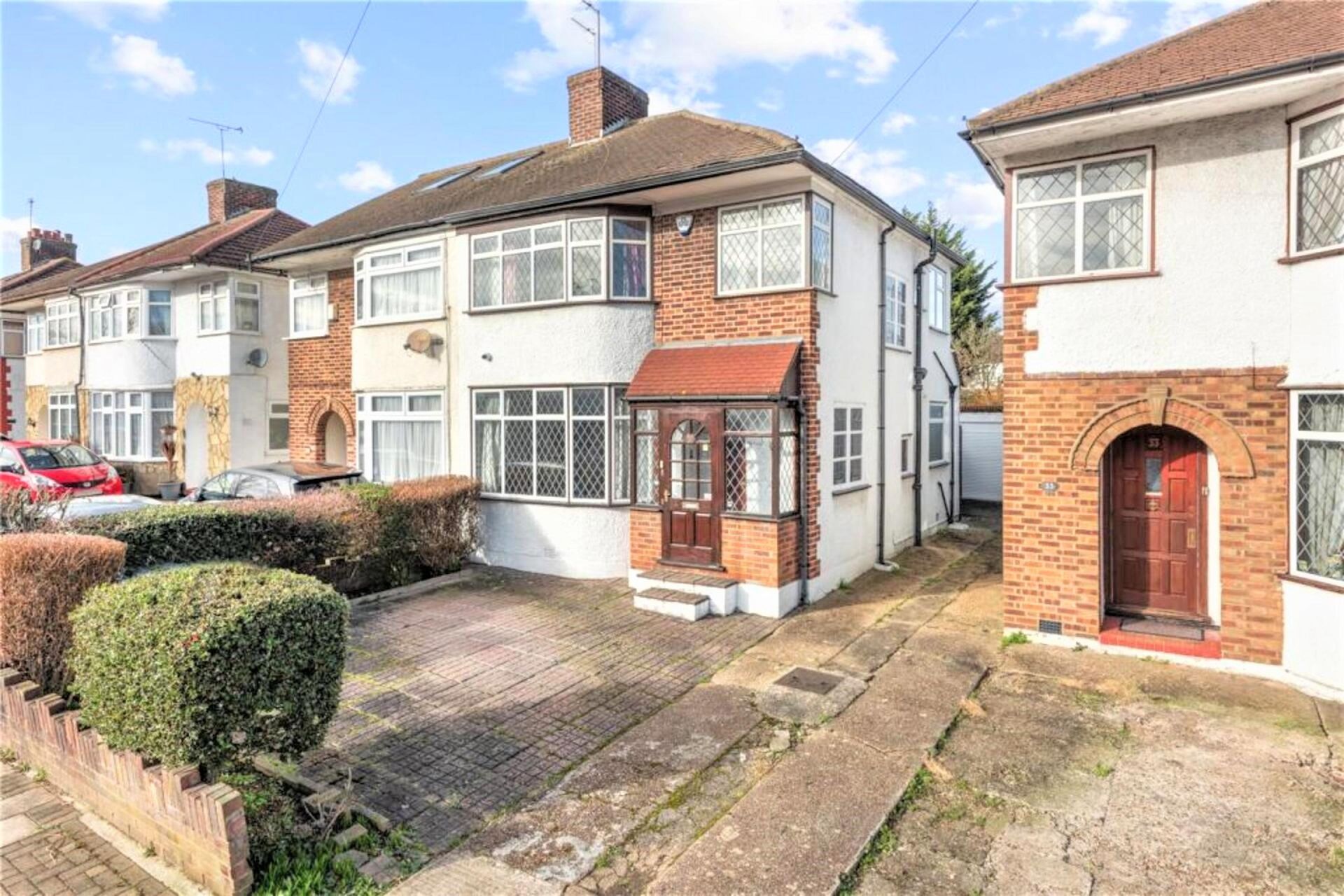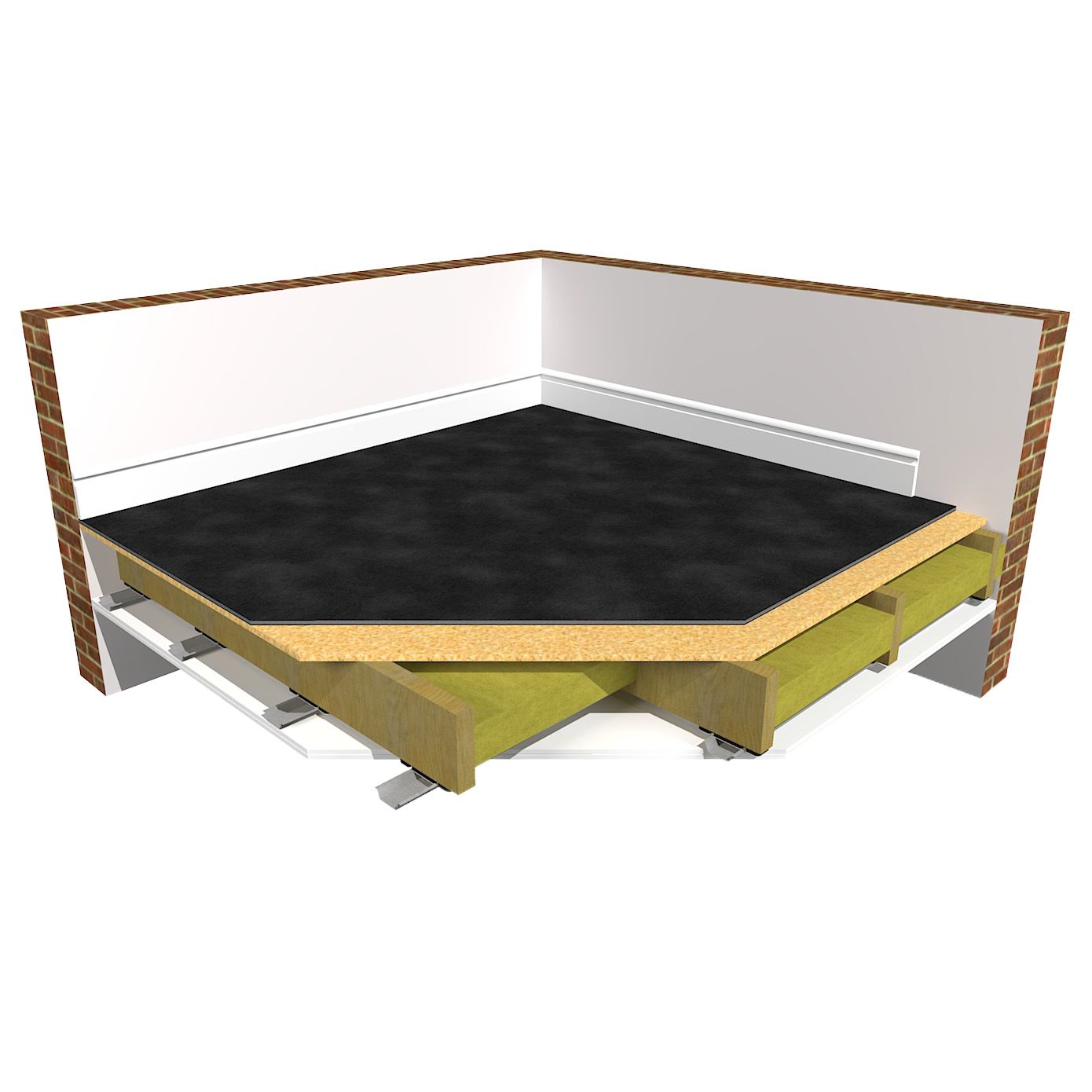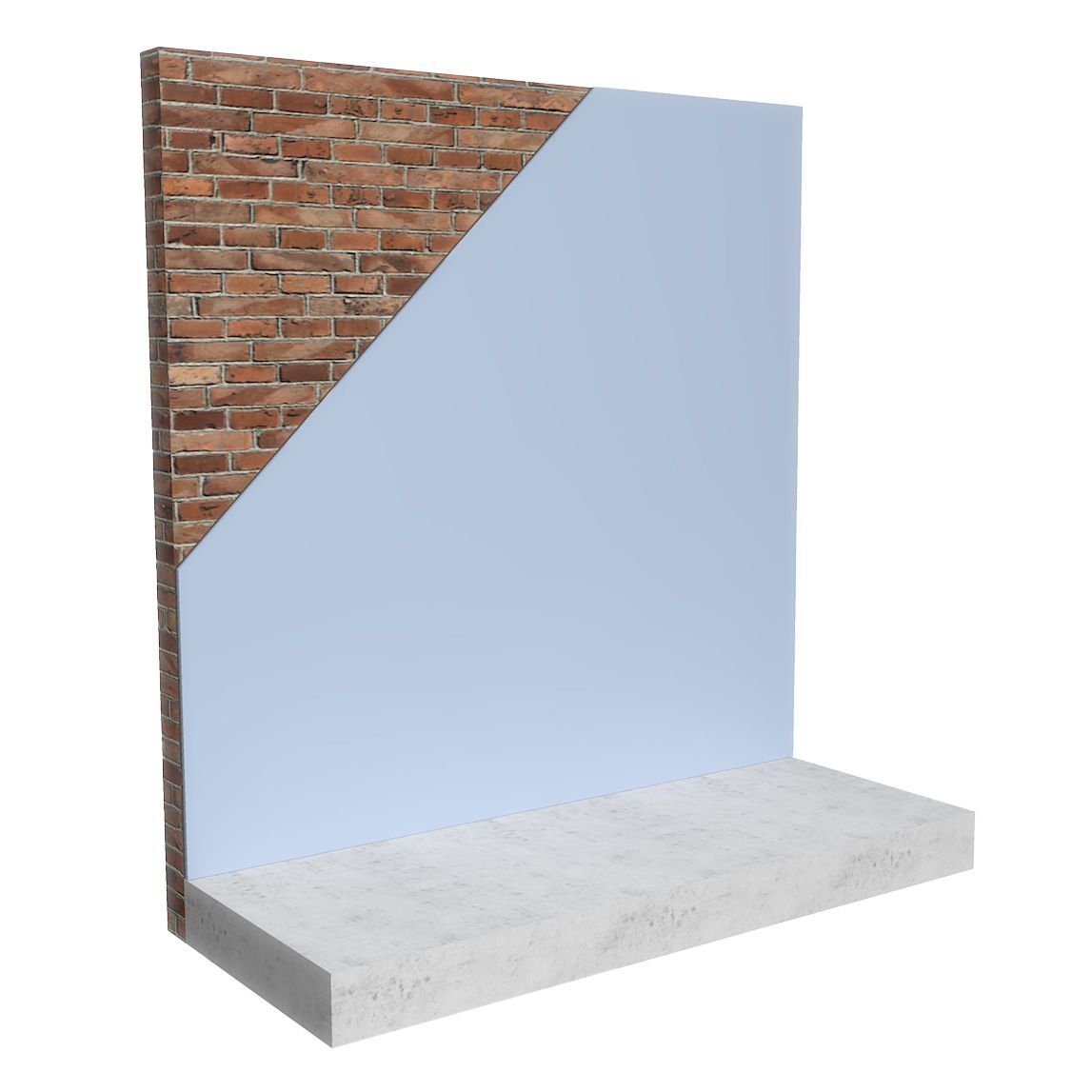What are the best acoustic underlays for timber and concrete floors?
Struggling with Noise from Above?
There is nothing worse than spending time in your own house or flat and being aware of unwanted noise from above. Whether this be children running around (which can sound like a herd of elephants), moving furniture, shouting, music or TV noise.
These disturbances are often made worse by modern hard flooring choices - such as laminate, hardwood, or tiles - which offer little sound absorption compared to carpet.
Why Acoustic Underlay Is the Ideal Solution
The good news is, you don’t have to live with these noise problems. Acoustic underlays are specifically designed to reduce both impact noise (like footsteps) and airborne noise (such as voices or music), helping restore comfort and quiet to your space.
In this blog, we’ll guide you through the best acoustic underlay options for both timber and concrete floors, so you can make the right choice for your property.
Soundproofing underlay versus Carpet underlay
Many homeowners assume that carpet underlay and soundproofing underlay serve the same function - but that’s a costly mistake when it comes to reducing unwanted noise. Understanding the difference is key to achieving effective soundproofing in your home.
What's the Difference Between Carpet Underlay and Soundproofing Underlay?
Carpet underlay is designed for comfort, durability, and helping carpets fit better, not for significantly reducing noise. While these products can provide a slight acoustic benefit, they are not engineered for true soundproofing.
Why Carpet Underlay Doesn’t Truly Soundproof a floor
While some carpet underlays may claim to have soundproofing properties, they don’t perform anywhere near the level of dedicated soundproofing underlays or acoustic mats. Importantly, most carpet underlays aren’t tested to the same acoustic standards as true soundproofing materials.
Be aware of a common sales tactic: some brands quote a dB rating to imply soundproofing performance. However, this usually refers only to airborne noise reduction on concrete floors, whereby the underlay itself may contribute just 5% to that figure.
Choosing the Right Product for Carpeted Floors
If you're trying to reduce noise under a carpet, it's essential to choose a soundproofing underlay, such as a SoundMat which is designed specifically for that purpose. Later in this blog, we’ll show you the best options available for both timber and concrete subfloors.
Are you soundproofing against Airborne or Impact noise?
Sound is broken down by airborne noise (transmitted through the atmosphere) talking, TV noise, dogs barking etc and impact noise the physical impact of two solids hitting one another (footfall, doors banging, walking, furniture moving etc).
Whether the noise is airborne noise, impact noise, or a combination of both will determine the soundproof flooring underlay you will need. To find out more about airborne and impact noise
click here.
4 key questions before adding acoustic underlay to your floor:
Before choosing an acoustic underlay for your home or flat, it’s important to ask the right questions. Your answers will help determine the most effective soundproofing solution for your specific situation - whether you're dealing with timber or concrete floors, impact or airborne noise.
1. Is the Floor a Solid Concrete Floor or Timber Joist Floor?
The type of subfloor is crucial. Concrete floors can require different acoustic treatment to timber joist floors. Choosing the right product ensures a better noise reduction performance.
2. Where Is the Noise Coming From - Above or Below?
Knowing the source of the noise helps guide the treatment. Noise from above usually requires impact sound insulation, while noise from below may need airborne noise reduction. Some solutions can tackle both.
3. Is the Noise Vibration Impact, Airborne, or a Combination of Both?
Impact noise includes footsteps and dragging furniture. Airborne noise includes voices, music, or TV sounds. Many real-world situations involve a mix, so selecting a product like SoundMat 3 Plus that addresses both can be essential.
4. How Loud Is the Noise You Are Experiencing?
The louder the noise you’re dealing with, the more robust the soundproofing or acoustic solution needs to be. For example, heavy footfall or loud TV noise will need higher-performance acoustic underlay like SoundMat 3 Plus.
5. What Is the Final Floor Finish?
Your choice of floor finish - such as carpet, laminate, hardwood, or tiles can have an affect on the overall performance. With severe impact noise problems, a soft final floor finish will help to absorb some of the footfall at source. Different acoustic underlays are also more suited to different final floor finishes. Learn More.
How to soundproof a floor with acoustic underlays?
One of the most effective acoustic underlays to soundproof a floor for both impact and airborne noise reduction is the SoundMat 3 Plus - a slim (only 15mm thick) acoustic mat designed to easily and effectively soundproof timber floors. The following video demonstrates a real-world installation, including before and after sound tests.
Effective floor soundproofing isn’t just about adding any material - it requires a considered approach. To reduce both airborne noise (like voices and music) and impact noise (like footsteps and dragging furniture), there are some key principles to follow.
Improve the Mass of the Floor to Block Airborne Noise
To block airborne sound, increase the mass and density of the floor using specialist soundproofing materials such as acoustic mats like SoundMat 3 Plus. The greater the mass, the harder it is for airborne sound to pass through.
Improve the Floor’s Ability to Absorb Impact Noise and Vibration
Mass alone doesn’t stop impact noise. You need products that absorb sound energy and vibration, with cushioning layers to absorb the impact vibration. Proven acoustic underlay solutions like SoundMats act like a floating floor, which help to absorb impact vibration before it enters the structure of the floor.
Add Acoustic Insulation Between Timber Joists
If you have a timber joist floor, adding acoustic insulation like Acoustic Mineral Wool between the joists is important. This prevents sound from resonating and amplifying within the floor void.
Use a Combination of High-Mass Materials for Effective Soundproofing
Different materials block different sound frequencies. A combination of varied high-mass products, rather than just more of the same material will deliver a better performance.
Insulate cavities when soundproofing a timber floor
It is important to consider voids between the floorboards and the ceiling. Any noise that gets into this sealed chamber will echo resonate and amplify the noise (this is called the drum effect). To combat this we recommend filling between the timber joists with acoustic mineral wool.
This is the equivalent of shouting down a cardboard tube and it amplifying your voice. If you then fill some of the cardboard tube with cotton wool and do the same, the noise will be absorbed.
Acoustic mineral wool and its use in soundproofing
Acoustic mineral wool is used to absorb sound (not block it) making it ideal for use within cavities. In the video below, you’ll learn where and how to use acoustic mineral wool effectively. Plus, a simple demonstration of how effective the benefits are when used as part of an acoustic underlay solution.
The 3 best ways to soundproof a timber floor
Soundproofing a timber floor effectively means tackling both airborne noise (like voices and TV sound) and impact noise (such as footsteps or furniture movement). To achieve this, you need to follow three key principles: increase the mass of the floor to block airborne sound, add a cushioning impact-absorbing layer to reduce vibration, and install acoustic mineral wool between the joists to prevent sound from resonating in the floor cavity.
In the video below, we showcase the top 3 acoustic underlays for timber floors, SoundMat 3 Plus, Reverso SoundMat, and SoundScreed WF28. You'll discover how each solution performs against different types of noise and how to choose the right acoustic underlay for your noise issue and final floor finish.
1. ProSound™ Reverso SoundMat (18mm) Dual-Sided Acoustic Underlay for Timber Floors
Slim, stabilised and Perfect for Hard Floor Finishes
The ProSound™ Reverso SoundMat is a compact 18mm thick acoustic underlay that combines three dense soundproofing layers with a resilient impact-absorbing layer. It's designed specifically to improve the airborne and impact sound insulation of timber floors, significantly reducing noise like TV, conversation, and footsteps.
Built-In Stabilising Layer Saves Time and Cost
What makes Reverso unique is its integrated stabilising layer, allowing most hard floor finishes, like laminate, engineered wood, or LVT to be installed directly on top without the need for extra over boarding. This saves installation time and reduces overall costs.
Reversible Design for Hard or Soft Floor Finishes
The reversible design means it’s equally suitable for soft floor finishes such as carpet. Both options maintain the same system height, ensuring consistent finish levels across multiple rooms.
Key Features at a Glance
📏 Dimensions: 1200mm x 600mm x 18mm (0.72m²)
🔇 Ideal for impact and airborne noise: voices, TV, footsteps
🛠️ Installation: Direct-to-subfloor with no adhesive needed, easy DIY installation
🔁 Reversible: Suitable or hard or soft floor finishes
🚫 No over boarding required for most hard floor finishes
Reverso SoundMat™ A Reversible Acoustic Underlay for Hard and Soft Floor Finishes
Discover the ProSound™ Reverso SoundMat™ from The Soundproofing Store. A clever, unique and reversible overlay soundproofing solution designed for both impact and airborne noise reduction.
This video provides a quick product overview, showing how Reverso is compatible with almost all final floor finishes, including laminate, engineered wood, and carpet. Its built-in stabilising layer means no overboarding is needed for most hard floors, helping you save on both installation time and cost.
How to Soundproof a Floor with Reverso SoundMat™ A Full Installation Guide
Learn how to soundproof a floor effectively using the ProSound™ Reverso SoundMat, a versatile acoustic underlay designed to reduce both impact noise and airborne sound. This step-by-step video shows a full installation process and explains how Reverso’s reversible design works seamlessly with both hard and soft floor finishes. Unlike many other acoustic underlays, the Reverso requires no over boarding layer (in most cases) when installing hard floors, saving time, materials, and installation effort.
2. ProSound™ SoundMat 3 Plus (15mm) A High-Performance Acoustic Mat for Carpeted Floors
Unrivalled Soundproofing for Impact and Airborne Noise
The ProSound™ SoundMat 3 Plus is a powerful, all-in-one acoustic underlay engineered to reduce both airborne noise (TV, conversation) and impact noise (footsteps, furniture movement). With a slim profile of just 15mm, it’s ideal for carpeted floors in homes, flats, or commercial spaces.
Multi-Layer Construction for Maximum Performance
This mat combines layers of high-mass material (Mass Loaded Vinyl) with a closed-cell foam layer, combined into a single product. This structure delivers excellent soundproofing performance while keeping installation quick and hassle-free.
Compatible with All Floor Finishes
While designed for carpet finishes (no additional underlay needed), the SoundMat 3 Plus can also be used under laminates, vinyl, and tiles, simply add a rigid over board layer fixed with adhesive. For carpets, gripper rod risers will be needed around the perimeter to raise the height of the gripper rod.
Key Features at a Glance
📏 Dimensions: 1200mm x 1200mm x 15mm (1.44m²)
🔇 Designed to reduce airborne and impact noise
🏆 3 layers of soundproofing technologies cleverly combined in one mat
🛠️ Installation: Direct-to-subfloor with no adhesive required. Easy DIY installation
🪄 Carpet-ready: No underlay needed beneath carpet finishes. SoundMats act as luxury carpet underlays
🔧 Other finishes: Use a rigid board when installing hard floor finishes
Why use SoundMats when soundproofing a floor? Features, benefits and applications
Discover the key benefits of using SoundMats for effective floor soundproofing. In this video, we explore the features and applications of the SoundMat 2 Plus and SoundMat 3 Plus, two high-performance acoustic mats designed to reduce both airborne and impact noise on timber and concrete floors. These ultra-thin, easy-to-install soundproofing solutions are ideal for carpet finishes, but also compatible with other final floor types (with an over boarding layer). Making them a flexible choice for a wide range of properties.
How to Soundproof a Floor with SoundMat 3 Plus The Full Installation and Sound Test
Learn how to soundproof a timber floor using the ProSound™ SoundMat 3 Plus, a direct-to-floor acoustic mat designed to reduce both impact noise (like footsteps) and airborne sound (like voices and TV). At just 15mm thick, this high-performance solution combines layers of mass (MLV) and closed cell foam to deliver outstanding sound insulation with minimal floor height increase.
In this video, you'll see the full installation process on a timber floor between residential hotel rooms, along with before-and-after sound tests. Whether you're dealing with noisy neighbours or want to improve inter-floor privacy, SoundMat 3 Plus is a proven, high performing solution.
3. ProSound™ SoundScreed WF28 (28mm). High-Mass Floor Soundproofing to Block Airborne Noise
Engineered for Superior Airborne Noise Reduction
The ProSound™ SoundScreed WF28 is a dense, high-mass floor soundproofing system designed to significantly reduce airborne noise. Ideal for those looking to create a quieter, more private living environment and particularly suited to new builds, refurbishments, or property conversions.
Two-Layer Acoustic Design for Maximum Performance
SoundScreed WF28 combines an 18mm dry screed board for added mass with a 10mm wood-fibre resilient layer to help add resilience to the floor. This dual-layer system improves airborne sound insulation and provides a solid base with some resilience for reducing light impact noise.
Ideal for Hard Floor Finishes
Designed to be overlaid on existing timber floorboards, SoundScreed WF28 creates a strong, level base that’s ready for hard floor coverings, without needing an extra stabilising layer. This reduces installation time and labour costs, making it a practical choice for builders and homeowners alike.
Key Features at a Glance
📏 Dimensions: 1200mm x 600mm x 28mm (0.72m²)
🔇 Excellent for airborne noise reduction in floors
🏆 2-layer system: 18mm dry screed + 10mm wood-fibre resilient layer
🛠️ Installation: Simple overlay with 4-way overlap joints
🪵 Provides a solid, stable base for hard floor finishes
🏡 Ideal for new builds, conversions, and renovations
SoundScreed WF28 - Uses, Benefits & Overview of This High-Mass Acoustic Floor Solution
ProSound™ SoundScreed WF28 is a powerful overlay floor soundproofing system specifically designed to reduce very high levels of airborne noise. This versatile solution is ideal for a wide range of environments. Whether you're tackling noise issues in domestic homes, offices, retail units or commercial buildings.
SoundScreed WF28 is suitable for all final floor finishes and can be installed easily as a DIY project. With its dense, layered structure, it provides a strong, stable base while delivering excellent airborne sound insulation performance.
What soundproofing underlay works best for a concrete floor?
While we’ve explored the best acoustic underlays for timber floors, it’s equally important to understand what works best for concrete floors.
In most cases, airborne noise isn’t a major concern with concrete or beam and block floors finished with screed. That’s because the high mass of concrete naturally blocks airborne sound effectively.
However, if you are still noticing airborne noise issues, this may indicate a structural weakness or flanking path - feel free to contact our team for tailored advice.
To effectively reduce impact noise on a concrete floor, such as footfall or furniture movement, it’s essential to use a soundproofing underlay with a resilient cushioning layer. Products like the SoundMat 2 Plus are ideal, acting as a floating floor that absorbs vibration before it travels through the structure, resulting in a quieter and more comfortable living space.
4. ProSound™ SoundMat 2 Plus (12mm). A Slimline Acoustic Mat for Concrete Floors and Carpet Finishes
Slimline Design with Effective Soundproofing Performance
The ProSound™ SoundMat 2 Plus is a 12mm thick slimline acoustic underlay designed to reduce airborne noise, such as voices, TV, and general conversation and is especially effective in properties with concrete floors. Its compact size makes it ideal for situations where floor height is restricted but effective noise reduction is still needed.
Dual-Layer Construction for Impact Noise Control
SoundMat 2 Plus combines two proven soundproofing technologies: a 3mm mass loaded vinyl barrier to help block airborne noise, and a 9mm closed cell foam layer that absorbs sound energy and dampens vibration. This layered design helps significantly improve sound insulation.
Ideal for Carpeted Floors Over Concrete
This system is particularly suited for carpet installations over solid concrete floors. Its cushioned surface means it acts as a luxury caret underlay and carpets can be laid directly on top, making installation faster and more cost-effective.
Key Features at a Glance
📏 Dimensions: 1200mm x 1200mm x 12mm (1.44m²)
🔇 Optimised for impact noise reduction
🏆 Dual-layer system: 3mm mass loaded vinyl + 9mm closed cell foam
🛠️ Installation: Direct-to-floor, no adhesive required. Easy DIY installation
🪄 Ideal for concrete floors with carpet finishes
👣 Acts as a luxury carpet underlay
5. ProSound™ ImpactoMat 5 (5mm). An Ultra-Slim Impact Noise Underlay for Concrete Floors
Slimline Acoustic Solution for Multi-Storey Concrete Buildings
The ProSound™ ImpactoMat 5 is a cost-effective, ultra-slim 5mm acoustic underlay designed to reduce impact noise, such as footsteps on concrete subfloors. Ideal for use in apartments, hotels, offices, and other multi-storey buildings, it’s a smart choice where floor height restrictions apply.
Tough, Resilient, and Compatible with All Floor Finishes
ImpactoMat 5 offers impressive impact noise reduction. It’s ideal for hard floor final floor finishes, including wood, laminate, and tiles, and can even be installed above or below underfloor heating systems, making it extremely versatile for both residential and commercial settings.
Fast and Easy Installation
This acoustic underlay is designed for direct-to-floor application, requiring only adhesive to fix in place. Making it perfect for fast, low-disruption installations, for DIY or professionals alike.
Key Features at a Glance
📏 Dimensions: 1m x 10m x 5mm (10m²)
🔇 Reduces impact noise on concrete floors
🛠️ Installation: Adheres directly to subfloor with minimal effort. Easy DIY installation
🏢 Ideal for multi-level concrete buildings (flats, hotels, offices)
🔥 Can be used with underfloor heating systems
🧩 Durable, slim, and compatible with all final floor finishes
ImpactoMat 5: Concrete Floor Acoustic Underlay Solution
Looking for a slim but effective way to reduce impact noise on concrete floors? The ProSound™ ImpactoMat™ is just 5mm thick, yet delivers an impressive soundproofing performance.
In this video, we explore how ImpactoMat works, why it's ideal for multi-storey buildings like apartments, hotels, flats and offices, and how it fits seamlessly under laminate, engineered wood and tiles, making it a versatile and cost-effective solution for concrete floor sound insulation.
Shop Acoustic Underlays - Top-Rated Soundproofing Solutions for Floors
SoundMat 3 Plus
15mm thick. Good for impact and airborne noise and carpet final floor finishes.
Reverso SoundMat
18mm thick. Good for airborne and impact noise and hard floor final finishes.
SoundScreed WF28
28mm thick. Excellent airborne noise performance and suitable for all final floor finishes.
SoundMat 2 Plus
12mm thick.
Good for impact and airborne noise and carpet final floor finishes.
What final floor finishes can be used with acoustic underlays?
A common question when choosing an acoustic underlay or soundproofing mat is whether it limits your choice of final floor finish. The good news is, you won’t be restricted. Acoustic underlays are designed to work with a wide range of floor types, including carpet, laminate, vinyl, engineered wood, and tiles.
The only exception is that some hard floor finishes may require an additional stabilising layer to ensure a level, durable surface. We’ve highlighted below where this applies for each specific product.
As always, we recommend checking the installation guidelines provided by your final flooring manufacturer to ensure full compatibility and performance.
Can soundproofing mats or acoustic underlay be fitted underneath carpet?
Yes, absolutely. All of the acoustic underlays and soundproofing mats mentioned above, including the Reverso SoundMat (soft side up) SoundMat 3 Plus, and SoundMat 2 Plus are fully compatible with carpeted floors. In fact, these products allow carpet to be fitted directly on top and act as a luxury carpet underlay, making installation simple and efficient.
It is important to use gripper rod risers around the perimeter to accommodate the increased height of the underlay, ensure the floor is fully acoustically treated and to achieve a secure, professional carpet fit.
Can acoustic underlay be used with engineered wooden flooring?
Yes, it can. Acoustic underlays are suitable for use with engineered wood floor finishes.
The Reverso SoundMat can be installed directly under most engineered or hardwood floors without the need for an additional over boarding layer.
If you're using SoundMat 3 Plus or SoundMat 2 Plus, any engineered wood flooring that is 18mm or thicker can typically be laid directly on top.
For thinner flooring types (under 18mm), we recommend installing a 6mm hardboard layer first to create a flat, stable surface.
How to soundproof under laminate flooring?
Soundproofing underlays can be highly effective beneath laminate flooring. All of the acoustic mats mentioned above, including SoundMat 2 Plus, SoundMat 3 Plus, and Reverso SoundMat can be used as laminate underlay soundproofing solutions. The same applies for vinyl and cushioned vinyl flooring.
For best results, we recommend adding a 6mm hardboard layer over the soundproofing mat before laying laminate or vinyl. This provides a flat, stable surface.
An exception is the Reverso SoundMat, which includes a built-in stabilising layer, so most hard floor finishes can be installed directly on top, with no additional hardboard required.
What soundproofing mats would I need if I wanted to fit floor tiles?
All of our acoustic underlays can be used as a soundproofing solution beneath floor tiles, but extra care must be taken due to the fragile nature of tiles. Because floor tiles require a firm and stable base, they should not be installed directly onto soft, cushioned soundproofing mats, as this can lead to cracking or damage over time.
To avoid this, we recommend applying a 12mm hardwood board layer on top of the acoustic underlay before fitting tiles. This ensures a solid, level surface that preserves the integrity of the tile.
The Reverso SoundMat is an exception, as typically it does not require an over boarding layer. However, for tile installations, we advise priming the surface and considering a thicker stabilising board, especially when using smaller or more delicate tiles.
Can you fit soundproof floor underlay on top of underfloor heating?
Yes, but it depends on the type of soundproofing underlay you choose. ImpactoMat 5 and ProSound™ SoundScreed 25 are both thermally transparent and are compatible with being installed directly on top of, or below underfloor heating systems.
However, for all other soundproofing mats, including SoundMat 2 Plus, SoundMat 3 Plus, and Reverso SoundMat, these must be fitted beneath the underfloor heating system.
This is because their dense, sound-blocking construction also restricts heat transfer, which could reduce the efficiency of your heating setup. Just like sound, heat is a form of energy and these high-mass mats are designed to block energy transmission.
Find out more about how to install underfloor heating in our detailed guide.
Do acoustic underlays meet part E building regulations for Soundproofing?
Yes, all of the acoustic underlays we have highlighted can meet and exceed the requirements of Part E Building Regulations when used correctly as part of a full soundproofing system.
SoundMat 3 Plus, SoundMat 2 Plus, Reverso SoundMat, ImpactoMat 5 and SoundScreed WF28 are tested acoustic underlay solutions that not only comply with Part E standards for separating floors in residential buildings but can surpass the minimum performance requirements, significantly improving noise control between rooms or dwellings.
✅ To achieve compliance, it’s essential that these products are fitted, sealed, and installed correctly and as part of a complete soundproofing system.
Are acoustic underlays easy to fit?
Absolutely. All of the acoustic flooring products from The Soundproofing Store are designed for straightforward installation, whether you're an experienced DIYer or a professional tradesperson.
Each product comes with access to detailed installation guides, videos and technical data sheets, which can be easily downloaded to help you through every step of the process. Fitting acoustic underlay is a quick and efficient way to reduce unwanted noise in your home or building project.
👉 Download installation guides and technical data sheets here or contact our team for expert fitting advice (01423) 206208.
Acoustic underlays overview
By now, you should have a clearer understanding of whether you're dealing with airborne noise (like voices and music) or impact noise (like footsteps and slamming doors). We've also covered how crucial it is to identify whether your floor is timber or concrete, and how the final floor finish affects which acoustic underlay is most suitable.
We’ve highlighted some of the top-performing acoustic underlays available for different floor types and noise issues.
However, soundproofing can be complex, and choosing the right solution depends on your specific situation. If you're unsure which product is best for your needs, it's always best to speak with an expert.
Our experienced team is just a phone call away and ready to help you find the
best acoustic underlay for your property and noise problem.
Author
Phil Lyons heads up the technical team within The Soundproofing Store, bringing with him a wealth of expertise in the field of soundproofing and acoustics. With considerable experience in addressing a variety of noise-related challenges, Phil plays a crucial role in assisting customers in finding effective solutions to all types of unwanted noise problems.
Phil also serves as the head of the studio department, specialising in soundproofing music rooms and band practice spaces. His proficiency extends to regularly collaborating with builders and specifiers on projects that require compliance with Part E Building Regulations. Phil regularly demonstrates his versatility and extensive knowledge of soundproofing across all situations.
An authoritative voice within Soundproofing, Phil also fronts The Soundproofing Store YouTube channel, sharing his extensive knowledge and expertise with people all over the world.
"We don’t expect you to become an overnight expert in soundproofing, that’s what we’re here for."
